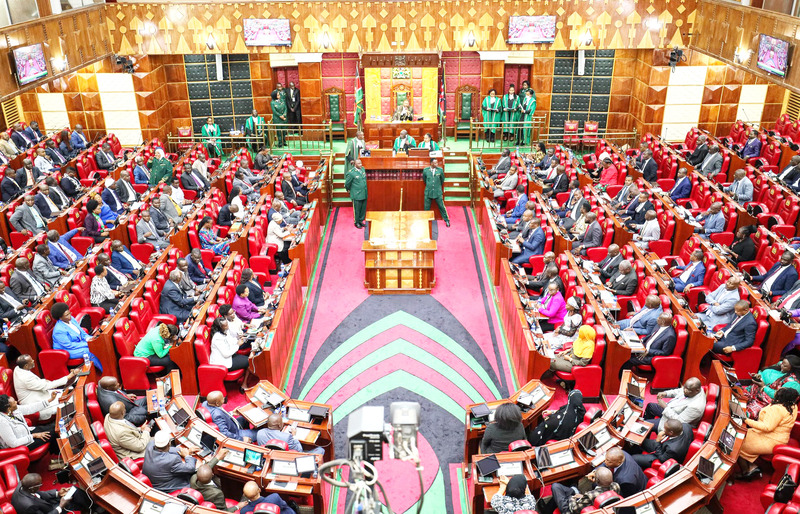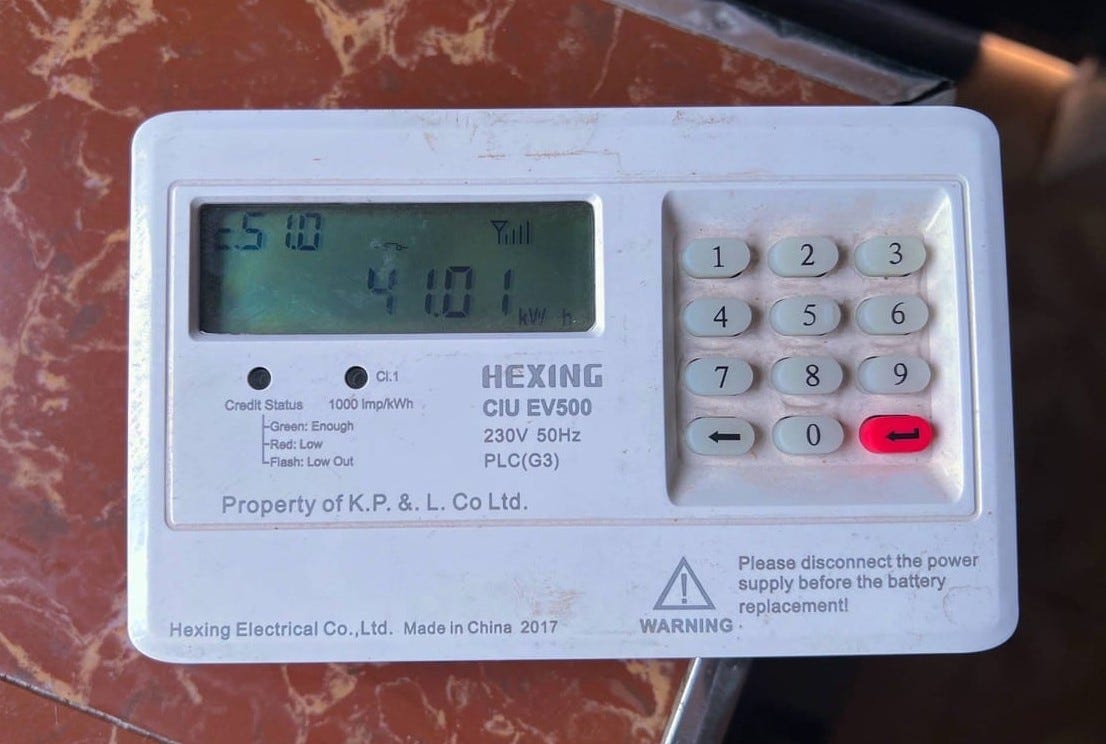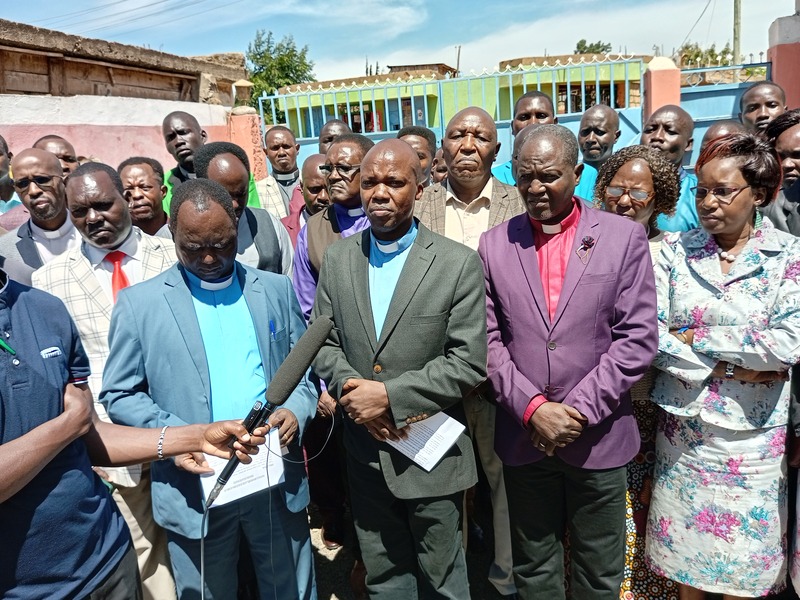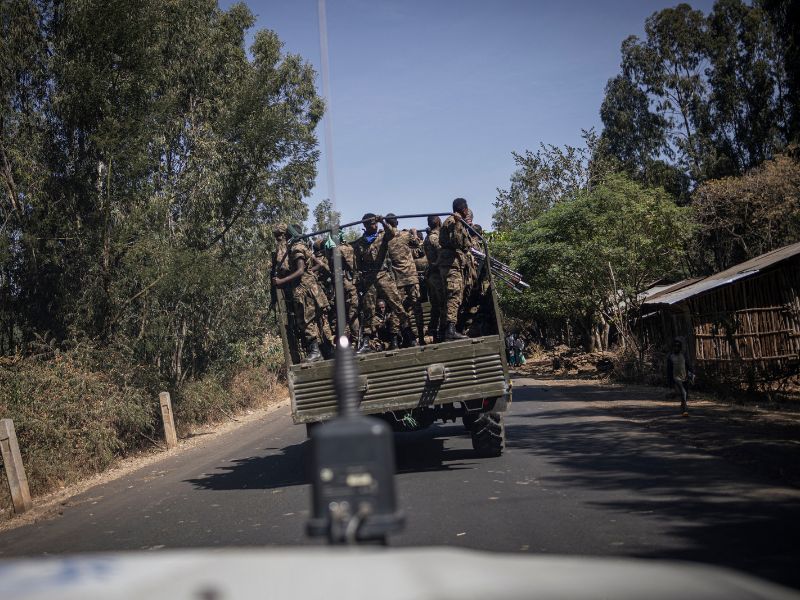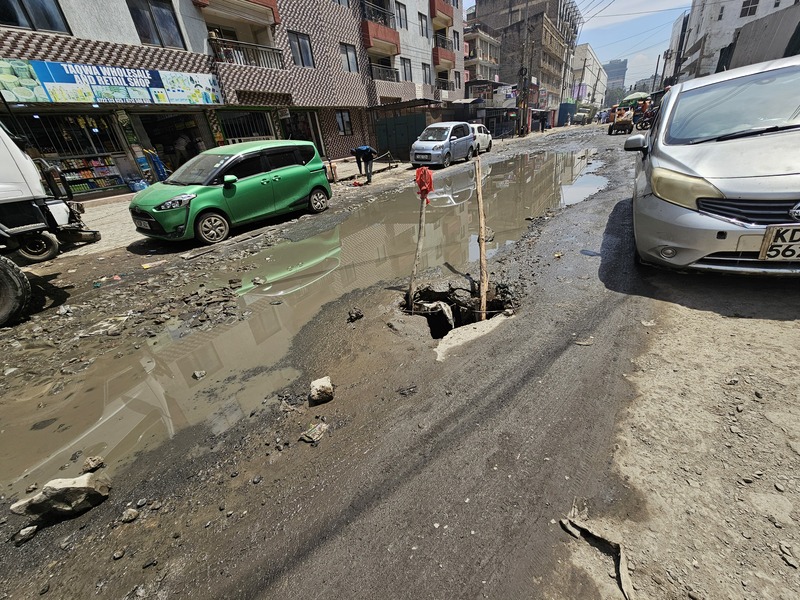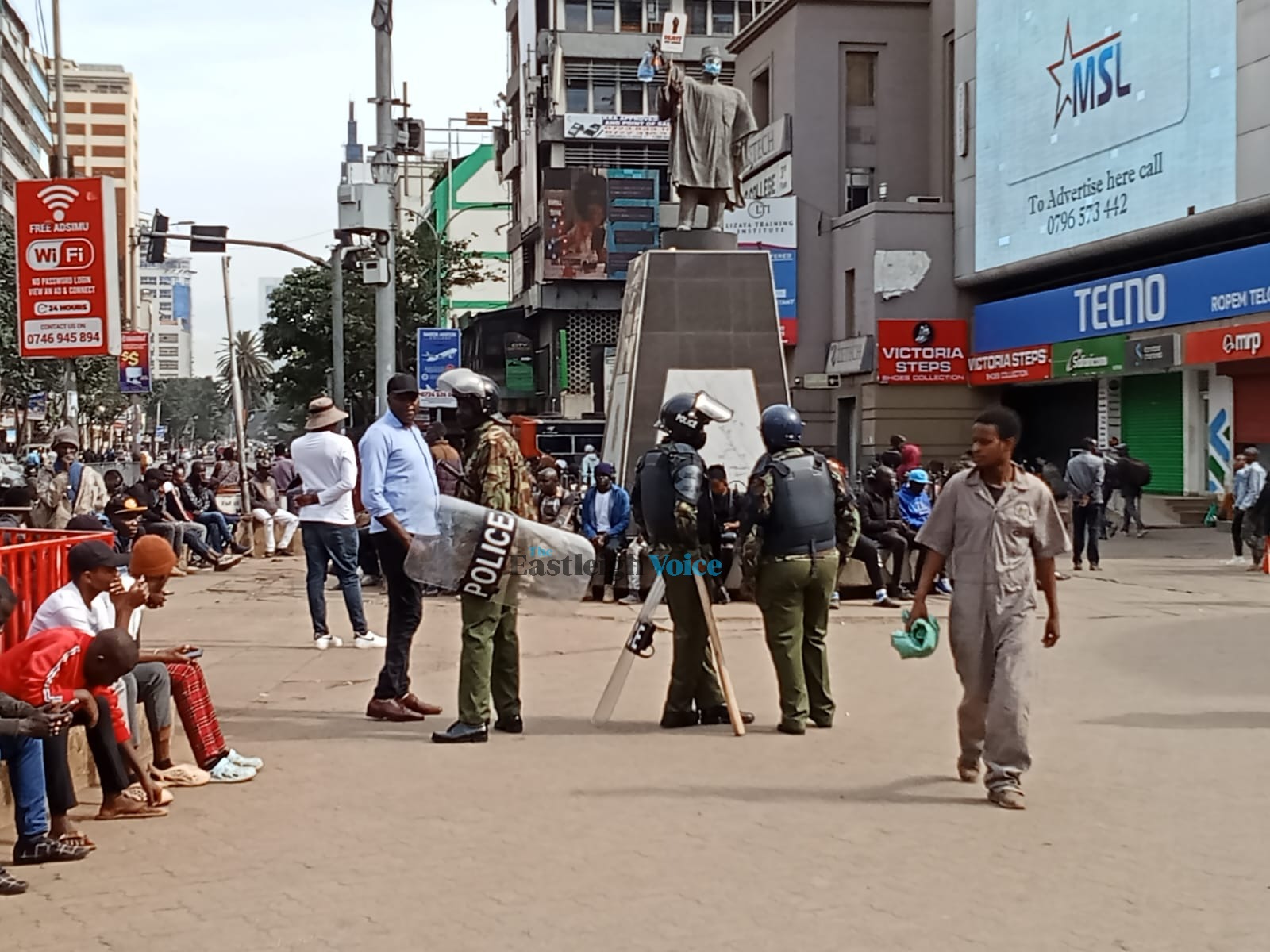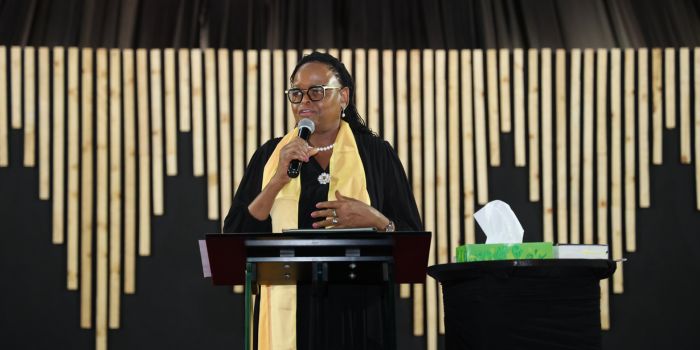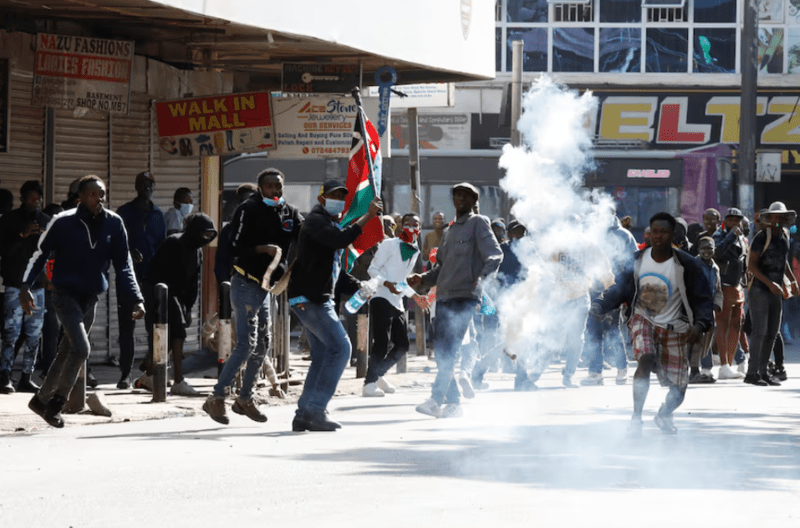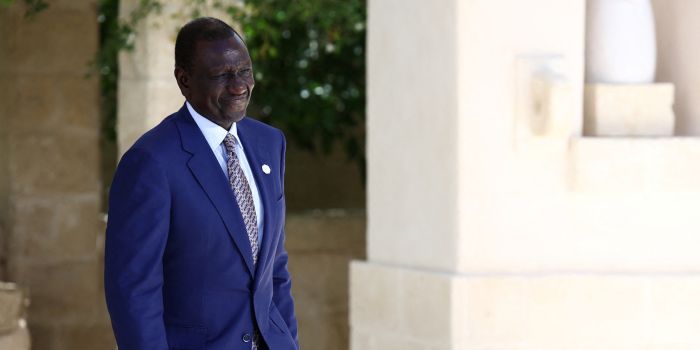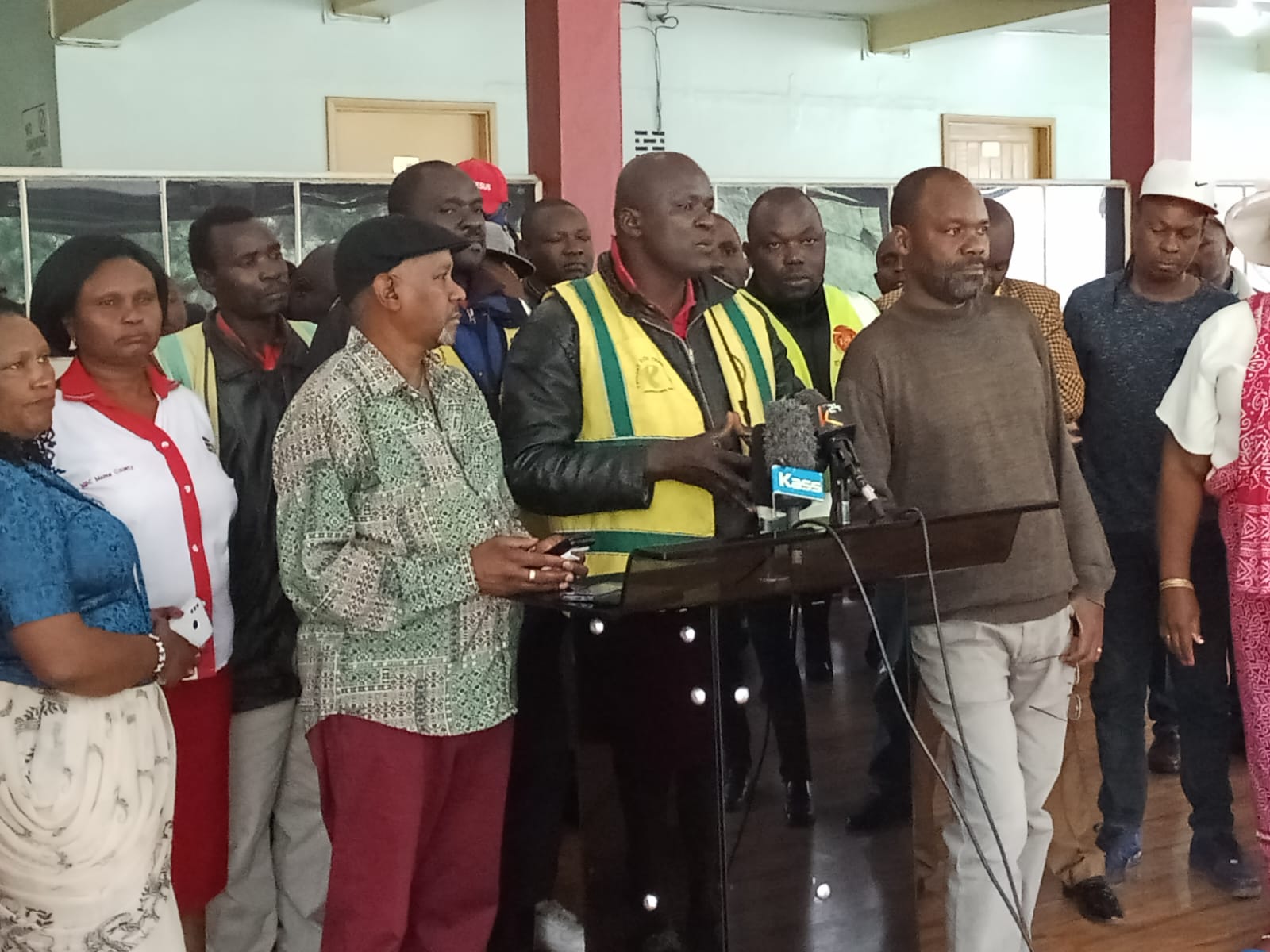A look at Parliament security amid claim that criminals targeted armoury
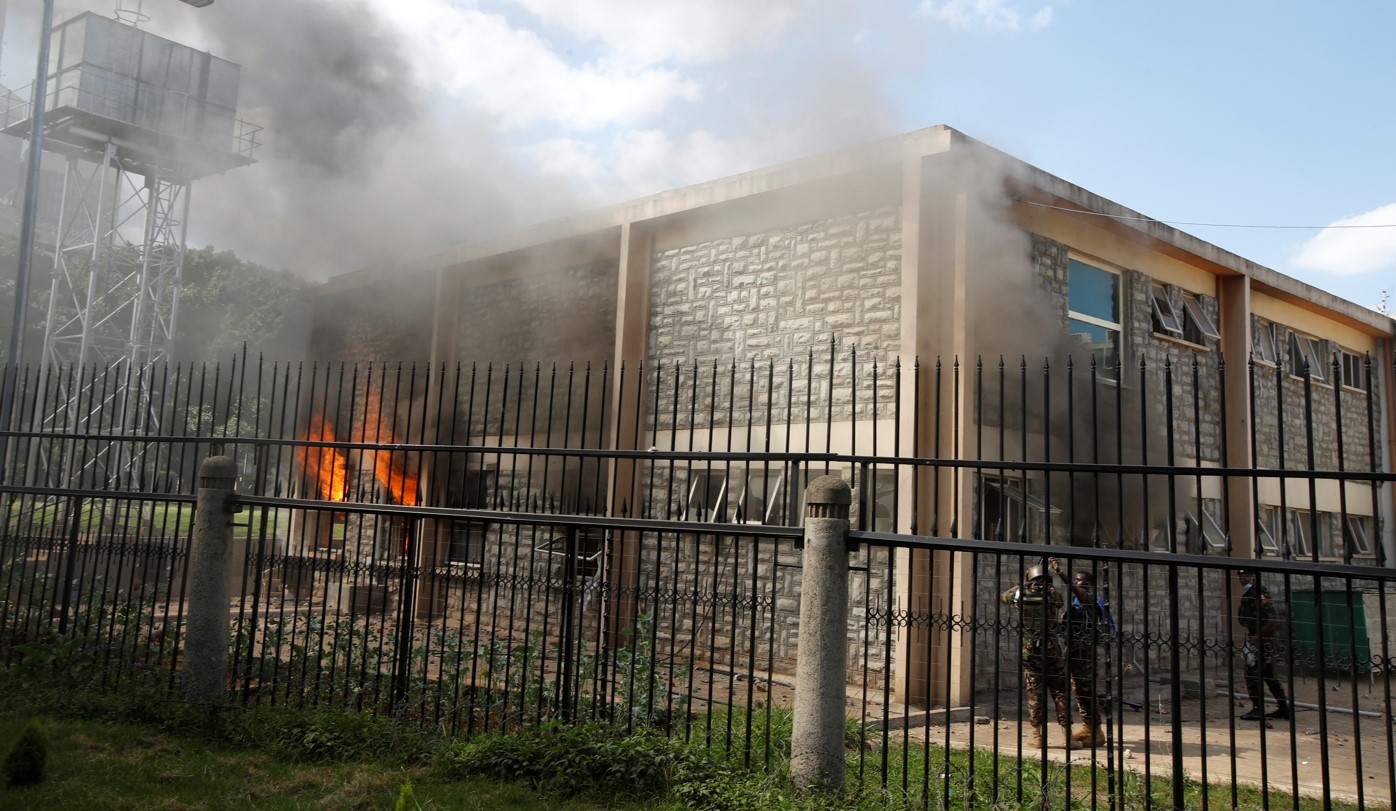
By Mary Wambui |
Though not listed among protected areas, conditions set by parliament are that demonstrations or protests are not permitted within its precincts and neither are visits allowed without due process.
President William Ruto's claim that last Tuesday's protests were infiltrated by criminals who targeted Parliament's armoury has spotlighted the security of one of the most heavily guarded installations in the country.
Parliament is the bicameral legislature of the country consisting of two houses; the upper house (Senate) and the lower house (National Assembly).
Keep reading
- Dangerous job without weapons: Security guards' struggles as anti-state demos turn violent
- Don't disregard constitution over isolated cases of demo infiltration by goons, state told
- Sign IEBC Bill to enable recall of MPs, opposition tells Ruto
- Take responsibility for protest-related deaths and abductions, ODM tells state
Though not listed among protected areas, conditions set by Parliament are that demonstrations or protests are not permitted within its precincts and neither are visits allowed without due process.
The dynamic nature of crime and the threat of terror has, over the years, led to multiple reviews of who guards Parliament and the qualifications needed for the serjeant at arms and teams that comprised intelligence officers.
This was until 2003, when they were replaced by military officials and a surveillance system was installed.
Over a decade later, a proposal to establish a parliamentary police unit headed by an officer of the rank of assistant inspector general was agreed upon to focus solely on the installation.
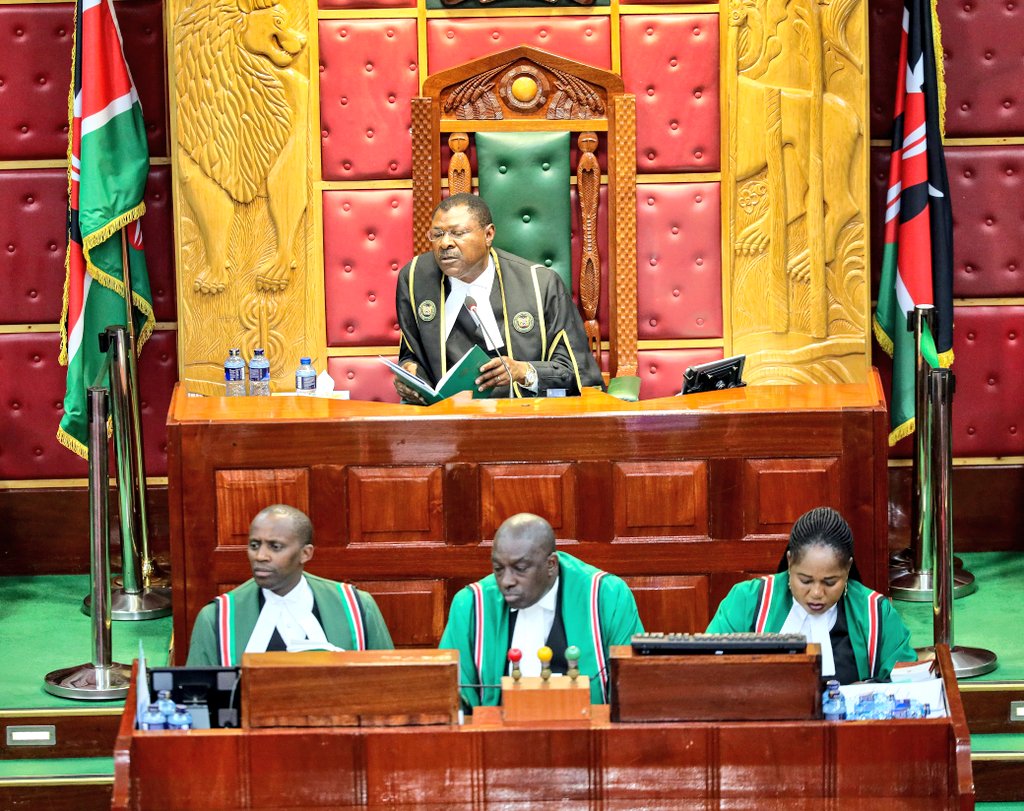 National Assembly Speaker Moses Wetangula. (Photo: File/National Assembly)
National Assembly Speaker Moses Wetangula. (Photo: File/National Assembly)
Reinforcements
Last February, National Assembly Speaker Moses Wetang'ula requested members to bear with the discomfort of additional security measures that were being effected.
Though the communication did not indicate the reason for heightened measures, it asked members to reduce the number of visitors at all times and allow stringent screening of their vehicles before entering Parliament.
Another requirement was for Parliament staff to wear identification badges at all times.
"In view of the above and due to the heightened security situation, I call upon all members to accord the necessary cooperation and support to officers, from the serjeant-at-arms and the safety and security department of Parliament to the Officer Commanding Parliament Police Station who are responsible for providing security," the speaker said at the time.
The Kenyan Parliament has its own security command structure with the officer in charge reporting directly to the officer commanding the Central Police Division (OCPD).
The command is responsible for both Parliament and the senate and what happens within the corridors of the two premises and their supporting infrastructure, the exception being the founding president's mausoleum which is manned by the military.
The officers' roles are complemented by those of individual legislators' bodyguards, the General Service Unit, Administration police officers in charge of the security of government installations, and the Rapid Deployment Unit.
"Unforgivable acts"
The multiple layers of security have over the years made the installation at the heart of the city and in the middle of several police stations, be viewed as impenetrable.
That was until June 25, when protesters opposing the Finance Bill, 2024, breached barricades, destroyed property at the mausoleum, including the perimeter wall, and gained access to the chambers.
They earned the condemnation of both the Speaker and President William Ruto, who described the breach as unforgivable acts of violence at a sacred institution.
"These great young people who have stepped forward to prosecute their agenda ... the affairs of the country ... I am certain that they did not burn Parliament. Criminals and other agents who took advantage of a legitimate concern of Kenyans stepped in, went and burnt the chief justice's office, went and burnt City Hall, went and burnt Parliament and destroyed the property of innocent citizens," President Ruto told a media roundtable at the State House in Nairobi on Sunday.
He explained that the individuals behind the acts did so "to steal from its armoury" and that, though in hiding, they would be arrested as their images were captured by surveillance cameras.
"How did the invaders invade Parliament and go straight to the armoury at the mausoleum? They went straight to the armoury at the serjeant at arm's office. Those are the questions that investigations will get into and a proper explanation will be given to the country," President Ruto added.
Asked whether there was an inventory showing what could have been stolen from the armoury, he said, "There's going to be investigations on how these armouries were attacked. How did these people know that there was an armoury in Parliament?"
The revelations by the head of state pointed to a deeper security arrangement with insiders confirming that in the armoury were sophisticated weapons for use in dire circumstances.
"The weapons were moved before they could be tampered with. Had the fire spread to the armoury, the case would have been different," a police officer told The Eastleigh Voice.
 A police officer stands near a burning vehicle at the Parliament buildings during a demonstration against Kenya's proposed Finance Bill 2024/2025 in Nairobi, on June 25, 2024. (Photo: REUTERS/Monicah Mwangi)
A police officer stands near a burning vehicle at the Parliament buildings during a demonstration against Kenya's proposed Finance Bill 2024/2025 in Nairobi, on June 25, 2024. (Photo: REUTERS/Monicah Mwangi)
Legislative authority
During the daring security breach, a protester was captured on camera holding what was thought to be the mace and walking with it on the streets, symbolising a successful attempt to occupy Parliament.
The speaker later confirmed that this was a display dummy but did not reveal the whereabouts of the official golden mace.
Reports indicate that the official mace is a blend of gold and ivory, weighing 12.5 kilograms and bearing the Kenyan coat of arms.
"The mace symbolises the legislative authority of the house and is placed on the table with its head facing the majority or government's side," Parliament documents state.
In most countries, no formal business can happen without it.
In 1954, with the authority of the Queen of England, Parliament received its first holding mace made of African teak (Mvuli wood), which was placed on the table of the house during the opening of the 11th council.
The one that was to serve as the official mace - made of ivory and silver gilt - was completed and handed over in 1958.
Past incidents
Parliament notes that offences relating to the mace include attempting to or removing it from its place in the chamber during a Sitting of the House, as well as disrupting the speaker's procession.
"These offences are considered to be grossly disorderly conduct and attract sanctions stipulated in the National Assembly Standing Orders," official documents show.
There have been attempts to steal the mace during fights in Parliament.
Examples are 1997, when opposition MPs attempted to grab it to disrupt a budget presentation by Finance Minister Musalia Mudavadi, and 2014, during the debate on the proposed Security Laws (Amendment) Bill 2014 when Fred Outa attempted to grab the mace to stop the resultant vote.
Kenya has no record of its mace being carted away. The MP's efforts were in vain as he was wrestled to the ground.
This, however, is a common practice in Nigeria where a stolen mace is used as a weapon to bash the heads of opponents when fights break out in Parliament and to forestall impeachment motions.
"In early 2013, the Mace of the House of Assembly of Ogun State was smashed and damaged during a commotion on the floor of the House, and by December 2014 (over 19 months later), it had yet to be replaced, and the Legislature had only mended the mace, making it look somewhat grotesque and skewed," records show.

